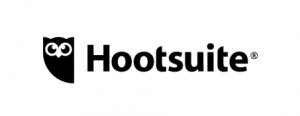From a way to connect with friends to a way to keep up with old friends to a way to be embarrassed by your mom, social media has evolved a great deal over the years. Today, it is a tool for communication and engagement that organizations cannot afford to ignore. For government agencies looking to connect with citizens, the right social media strategy is one that puts constituents first and lets the results follow.
GovLoop’s recent Government CX Virtual Summit: Putting the Citizen First featured a session on social media that was chock full of helpful tips and guidelines for crafting an effective gameplan. Titled “Putting the Citizen First on Social Media: 3 Essentials for Governments,” it saw lively and informative presentations by Hootsuite’s Morgan Zerr and King County, WA Digital Engagement Manager Warren Kagarise.
Zerr kicked things off with five basic rules for agencies wishing to grow their social media presence or deepen their engagement. The first recommendation was investing in shareable video or visual content—or as she put it “snackable” content that is easily consumed and shared by followers.
“Stories are now growing 50 times faster than newsfeed-based sharing,” she said, which demonstrates the importance of providing information to constituents in the formats that they prefer.
For social media advertising, she recommended boosting organic content and using targeting for efficiency—two strategies designed to maximize return on investment. Setting benchmarks was another key point, as mapping goals on social media to agency goals can help integrate them with the overall mission.
She also highlighted the importance of being prepared for the unexpected, which includes establishing credibility and making a plan to stay in front of any crisis that arises. As a final point, she drove home the importance of being familiar with privacy laws, which any agency must consider before using social media to interact with citizens.
Warren Kagarise began by discussing the value that government can find in social media, and the role that it can play as a driver of digital engagement.
“We should be able to respond to people on the platforms where they feel most comfortable,” he said, pointing out that millennials in particular are likely to eschew traditional forms of communication like phones or e-mail in favor of more modern platforms. “We’re always listening, and we’re always trying to figure out what people want from us.”
He also emphasized the importance of flexibility, and the ability to follow usage shifts across social media platforms—again, finding users where they are, instead of stubbornly sticking with familiar platform even as its popularity diminishes.
Kagarise also echoed Zerr on the importance of unifying social media strategy with overall agency mission—as he said “The strategy may be different at the department level, but we would like that to snap back to the larger organizational goal for social.”
He also agreed that using image and video is important, and pointed out that this can extend to things like emojis, which are certainly a necessity for agencies hoping to connect with millennial citizens. Equally important is making sure that content is optimized for mobile, which represents an increasing share of digital traffic.
As social media has evolved, so have the ways in which it can be used to connect people. Today’s landscape may look very different than that of just a few years ago, but by implementing smart, proven strategies and committing to remaining agile and adaptive, agencies will find that it is a powerful tool for engaging with the citizens that they serve.
Want more content like this? Stay ahead of the game and pre-register for more free government virtual summits!






“Snackable” is a good word for the content people seem to share the most nowadays. It seems social media is heading in a quicker, more visual direction according to these experts!
I agree with Mark – government media strategy is growing more and more visual! It can certainly help break through the noise of standard social media.